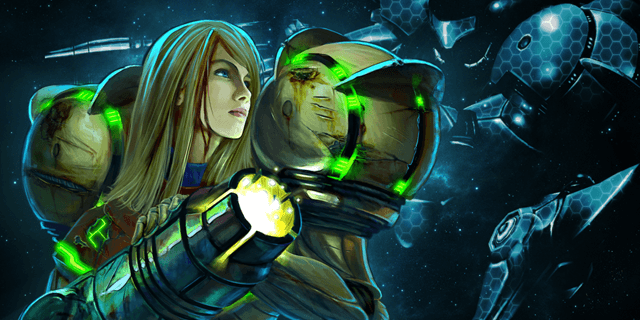

It’s always exciting to see an indie game spring to life after months, or even years, of planning and development, and Phoenix Online Studios’ first commercial project is certainly no exception. Last year, the fledgling indie studio created a Kickstarter campaign for a point-and-click adventure series, titled Cognition: An Erica Reed Thriller. One of the first of its kind to do so, the project was backed by hundreds of supporters, but also gained the support of one key individual. Jane Jensen, known for designing the popular Gabriel Knight series, came aboard the project as a story consultant. With all of the pieces in place, has Phoenix Online Studios successfully released the first installment of the four-part series?
The Hangman is the opening episode of the series, introducing players to FBI agent Erica Reed. Perpetually haunted by her past, and rapidly losing control of a psychic ability she refers to as her “intuition,” Reed is determined to redeem herself after her brother’s life is taken at the hands of a brutal serial killer. Phoenix Online does a terrific job setting up what would otherwise be a fairly standard detective plot — that is, when the interactive elements are working. Despite exaggerated character stereotypes and tedious filler sequences, the story holds its own while occasionally giving a nod to predecessors of the genre.
The prologue sequence details Erica’s past, introducing her gift, her partner, and the memories that haunt her throughout the game. This gory, well thought out sequence successfully establishes the tone for the rest of the episode, and is held back only by a somewhat confusing control scheme and, and often clunky action mechanics. Erica’s stubborn, headstrong nature is highlighted here, as well as the old dog loyalty of her partner, John McCoy. Not surprisingly, what the game gets right is its intense atmosphere and engaging storyline, and it hits the ground running. As far as these elements are concerned, the prologue sets a solid standard that is carried through the remainder of the chapter.
As the game progresses, however, more mundane plot elements begin to show themselves, breaking up the narrative and, at times, nearly grinding the fun to a halt. While it is necessary to understand the backstory and motivation of each of the characters around Reed, a lot of time in between plot-heavy segments is spent traveling between locations, or talking to the many secondary characters in the story.
While they are not exactly memorable, The Hangman’s secondary characters do provide the necessary backstory element required to bring Reed’s story to life. When investigating a crime scene with all of these characters in the same area, however, these scenarios do tend to feel a bit more like an episode of Dexter than a dark, gritty detective story. Despite a good cast of voice actors, the characters can be a bit one-dimensional, and stuck in their own typecast personalities. Erica’s boss, Davies, is a typical hardass boss who doles out orders without a second thought. Forensic expert Terence is a typical lab geek stereotype, complete with sloppy overweight appearance and nerd subculture references. However, despite a few eyeroll moments, the characters work well together and around Erica, making her story more immersive.
While the story elements and atmosphere are stunningly well done, there are certainly a few things that can be worked on, and will hopefully be resolved by later episodes in the series. As for the interface, graphic icons can be misleading as to their purpose, and a bit of digging is required to find out what each option actually does. For instance, clicking on a point of interest will provide the usual array of options: look, talk, interact, et cetera. However, instead of the traditional series of actions required to use an object in the inventory with a point of interest, the game requires players to first “equip” or otherwise hold an object, select the desired point of interest, and then select a briefcase icon — indicating the player wishes to use the currently held object with what has been clicked. This somewhat backwards mechanic may confuse players who are used to traditional point-and-click titles, but the learning curve is far from steep.
To help players get through often challenging puzzles and situations, a hint system is cleverly incorporated in the game through the UI itself. By accessing Reed’s phone and asking for her father’s help, valuable information can be received that will help move the game forward and in the right direction. With the rising popularity of casual gaming in mind, this simple aspect of The Hangman helps to bridge the gap between the “hardcore,” do-it-yourself structure of yesteryear’s adventure titles; and more casual, current generation games.
Overall, The Hangman is a great opening act to this series, albeit held back by an atypical point-and-click structure and a few minor stop-and-start issues within the narrative. Jane Jensen’s influence on the story and atmosphere gives this first episode the push it needs to become a memorable point-and-click adventure experience. While some players may find similarities with other recent entries to the genre, Cognition holds its own despite its flaws.
The first episode of Cognition: An Erica Reed Thriller is currently available from Phoenix Online Studios’ website, and is working towards a Steam release as well, through Steam’s Greenlight system.
Follow me on Twitter @superkyol.




 Android's Do Not Disturb Is Way Better Than iOS
Android's Do Not Disturb Is Way Better Than iOS Kholat (PC) - survival horror game - review
Kholat (PC) - survival horror game - review Modern Warfare 3 Review Round-Up
Modern Warfare 3 Review Round-Up How to Quickly Find Your Lost Mouse Cursor on Every OS
How to Quickly Find Your Lost Mouse Cursor on Every OS Where Are All Of The Video Games Featuring Female Protagonists?
Where Are All Of The Video Games Featuring Female Protagonists?